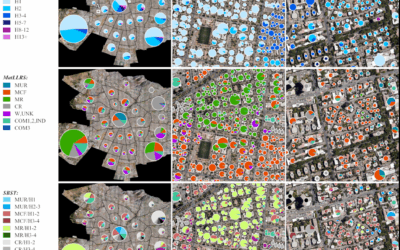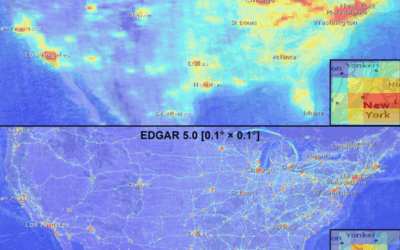Researchers from the Earth Observation Center (EOC) of the German Aerospace Center (DLR) in Oberpfaffenhofen and our Earth Observation Research Cluster (EORC) just published a study on near-realtime burnt area monitoring. The paper titled “Multi-sensor near-realtime burnt area monitoring using a superpixel-based graph convolutional network approach” was just published in the GIScience & Remote Sensing journal by Michael Nolde, Moritz Rösch, Torsten Riedlinger and Hannes Taubenböck.
Here is the abstract of the paper: Recent disastrous wildfire seasons highlight the urgent need for timely and accurate wildfire data to support relief efforts, to monitor the environmental impacts and to inform the public. While satellite-based thermal anomaly data is available in near real-time (NRT), deriving actual fire-affected areas from NRT imagery remains challenging. The proposed methodology combines a superpixel segmentation algorithm with rule-based and deep learning classification techniques to accurately derive burnt areas (BA) in NRT. This approach supports a range of mid- to high-resolution optical sensors and fuses data from diverse sources to continuously refine the burnt area during the monitoring of active fires. The NRT (DLRBAv2NRT) and the refined non-time critical (DLRBAv2NTC) BA product based on mid-resolution Sentinel-3 imagery were produced and tested against established global BA products for wildfire seasons in Greece 2023, British Columbia (Canada) 2023, and Central Chile 2023/2024. DLRBAv2NTC classified BA with the highest accuracies over all study regions (avg. IoU: 0.71; avg. F1-Score: 0.83). Despite its NRT processing capability, the DLRBAv2NRT achieved comparable accuracies (avg. IoU: 0.69; avg. F1-Score: 0.81) and could outperform the well-established and widely used global NASA burnt area product MCD64A1v061 by +2% (IoU) and +1% (F1-Score). Furthermore, the multi-sensor and fusion capability of the methodology was successfully demonstrated for the 2024 Valparaiso fire in Chile. The proposed mapping procedure demonstrates a fully-automated and flexible approach to derive burnt area delineations from satellite data in NRT with high accuracy. This allows for high-frequency monitoring of NRT burnt areas on a global scale.
Here is the link to the full paper: https://www.tandfonline.com/doi/full/10.1080/15481603.2025.2498188








